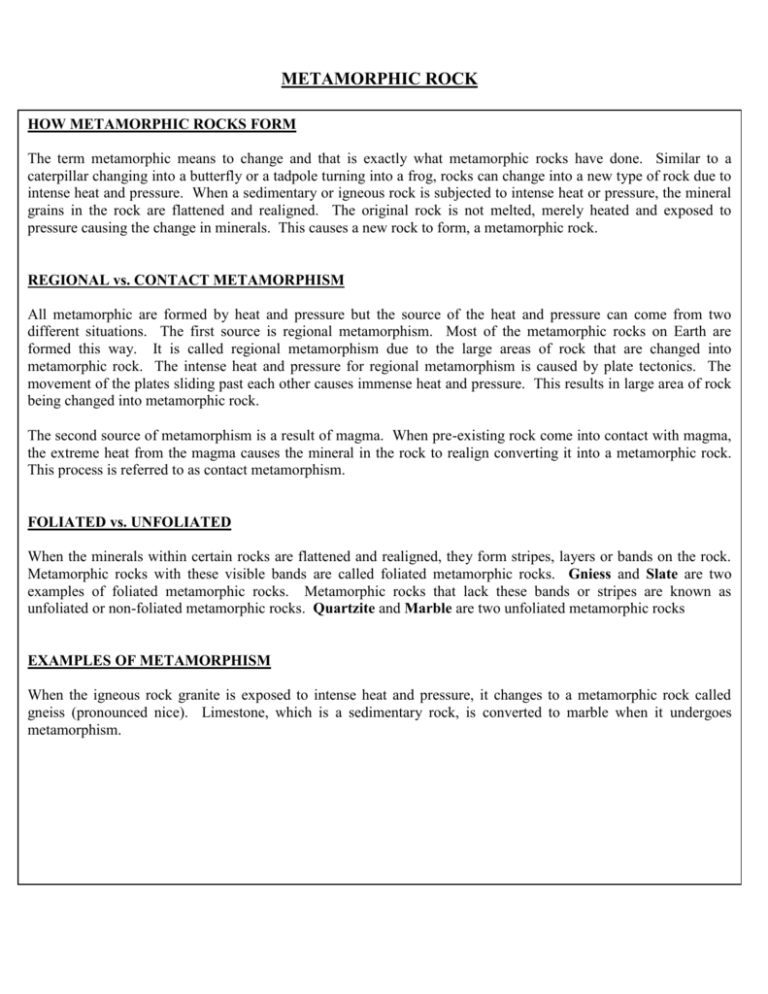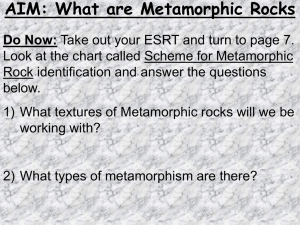R-4 metamorphic rock
advertisement

METAMORPHIC ROCK HOW METAMORPHIC ROCKS FORM The term metamorphic means to change and that is exactly what metamorphic rocks have done. Similar to a caterpillar changing into a butterfly or a tadpole turning into a frog, rocks can change into a new type of rock due to intense heat and pressure. When a sedimentary or igneous rock is subjected to intense heat or pressure, the mineral grains in the rock are flattened and realigned. The original rock is not melted, merely heated and exposed to pressure causing the change in minerals. This causes a new rock to form, a metamorphic rock. REGIONAL vs. CONTACT METAMORPHISM All metamorphic are formed by heat and pressure but the source of the heat and pressure can come from two different situations. The first source is regional metamorphism. Most of the metamorphic rocks on Earth are formed this way. It is called regional metamorphism due to the large areas of rock that are changed into metamorphic rock. The intense heat and pressure for regional metamorphism is caused by plate tectonics. The movement of the plates sliding past each other causes immense heat and pressure. This results in large area of rock being changed into metamorphic rock. The second source of metamorphism is a result of magma. When pre-existing rock come into contact with magma, II heat from the magma causes the mineral in the rock to realign converting it into a metamorphic rock. thePart extreme This process is referred to as contact metamorphism. FOLIATED vs. UNFOLIATED When the minerals within certain rocks are flattened and realigned, they form stripes, layers or bands on the rock. Metamorphic rocks with these visible bands are called foliated metamorphic rocks. Gniess and Slate are two examples of foliated metamorphic rocks. Metamorphic rocks that lack these bands or stripes are known as unfoliated or non-foliated metamorphic rocks. Quartzite and Marble are two unfoliated metamorphic rocks EXAMPLES OF METAMORPHISM When the igneous rock granite is exposed to intense heat and pressure, it changes to a metamorphic rock called gneiss (pronounced nice). Limestone, which is a sedimentary rock, is converted to marble when it undergoes metamorphism.








